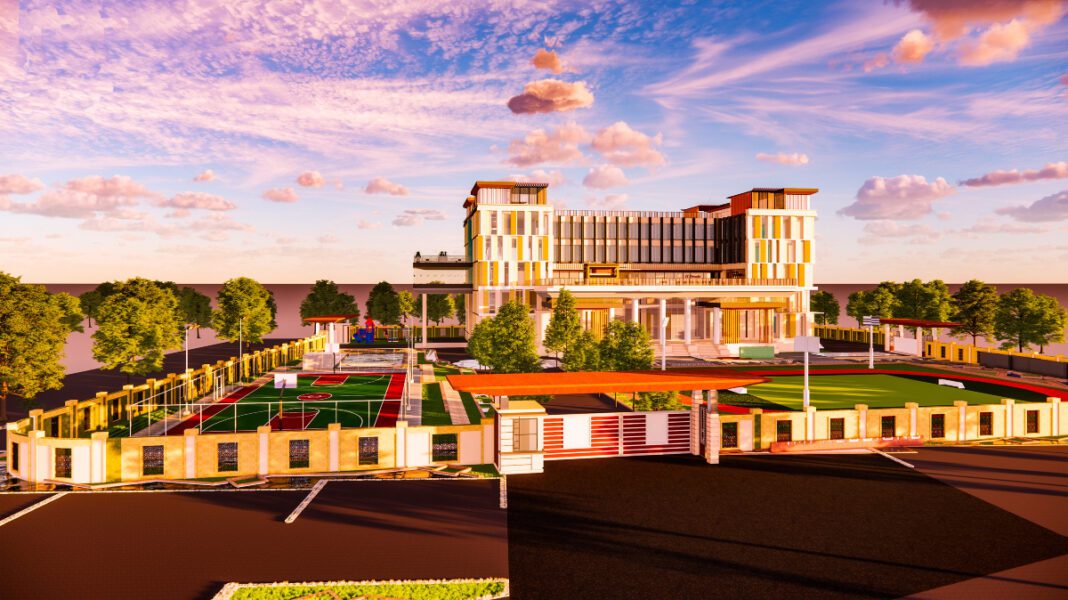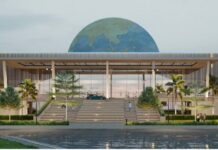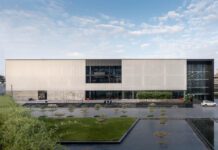Impressions – Jaipuria School, envisioned by Gaurav Gupta, Principal Architect and Urban Planner at De:cA+Pe Studio, redefines sustainable architecture in Lucknow. The school’s innovative design, incorporating natural ventilation and energy-efficient materials, creates an optimal learning environment. The strategic use of steel ensures structural integrity while contributing to the building’s modern aesthetic. With a strong emphasis on sustainability, including rainwater harvesting and solar power, the school is setting a new benchmark for eco-friendly education.
Initial Objectives
The main goal of a school project includes creating a conducive environment for learning, safety, sustainability, and community integration. To achieve this, the project aims to create spaces that facilitate effective teaching and learning, ensuring the safety of students and staff, and promoting environmental stewardship and student well-being. In addition, the design includes considerations for community use, accessibility for all individuals, and inclusivity for different learning styles and cultural backgrounds.
Breathing Architecture
Bernoulli’s principle explains that as the speed of a fluid (or air) increases, its pressure decreases. This is utilised in window design to enhance natural ventilation. When wind flows around a building, it creates areas of lower pressure near windows, allowing air to flow through and cool the interior spaces. The designers strategically place window openings to capture winds and shape the building facade to facilitate continuous airflow, improving indoor air quality and reducing the need for mechanical ventilation systems.
Further, the double-skin facade consists of two layers of glass separated by an air gap. This design reduced heat transfer, allowed for natural ventilation, and minimised the need for mechanical ventilation. Recessed windows create a shading effect that reduces solar heat gain and glare. And the tectonic facade design minimises reliance on mechanical heating and cooling systems, leading to lower energy consumption and operating costs.
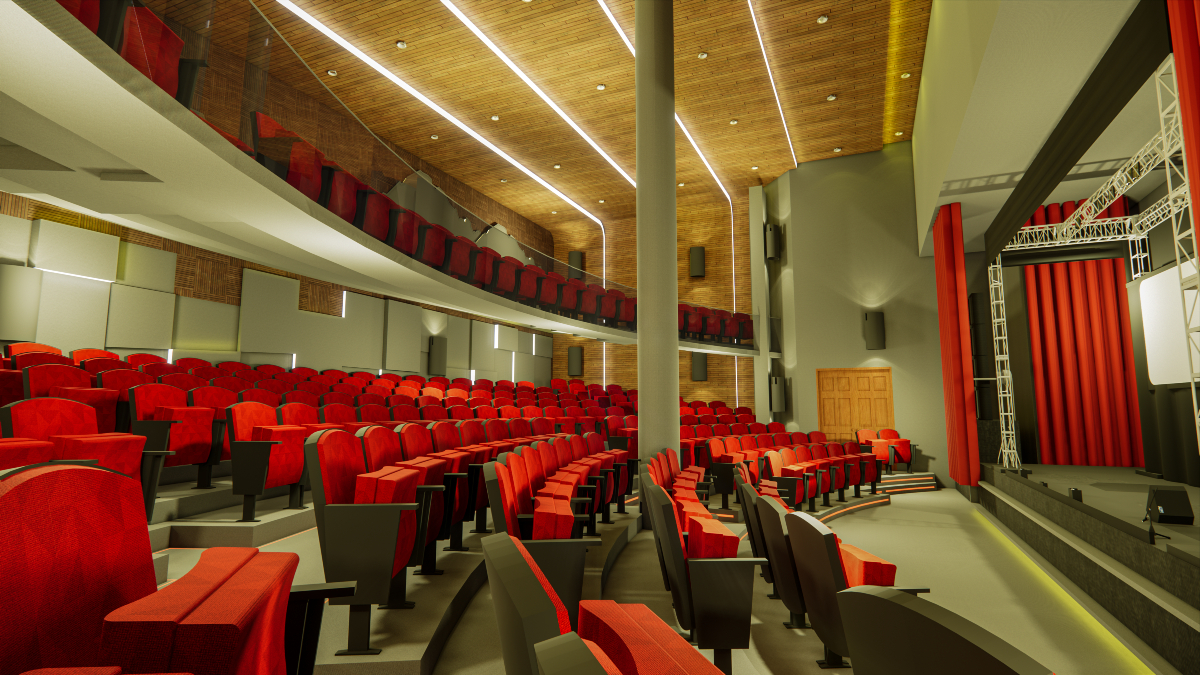
Bridging Challenges
One challenge faced in the project was differential thermal expansion and contraction. Steel and materials like concrete, masonry, and glass expanded and contracted at different rates with temperature changes, which could lead to stress concentrations, cracking, or failure at connection points. To address this, flexible connectors and expansion joints were used to accommodate thermal movement. The design detailing was carefully crafted to account for differential expansion and contraction without compromising structural integrity, incorporating slip joints in steel-to-concrete connections to mitigate these issues.
There is also corrosion compatibility. Steel is quite susceptible to corrosion when exposed to moisture and certain chemicals. Direct contact with untreated timber or acidic substances could accelerate corrosion, potentially compromising structural integrity over time. To address this, protective measures were implemented such as coatings — paint, powder coating — and galvanisation, and also stainless steel components were used to enhance corrosion resistance. Additionally, the assemblies with proper drainage and ventilation were designed to minimise moisture buildup. Regular inspection and maintenance were crucial to monitor and promptly address any potential corrosion issues.
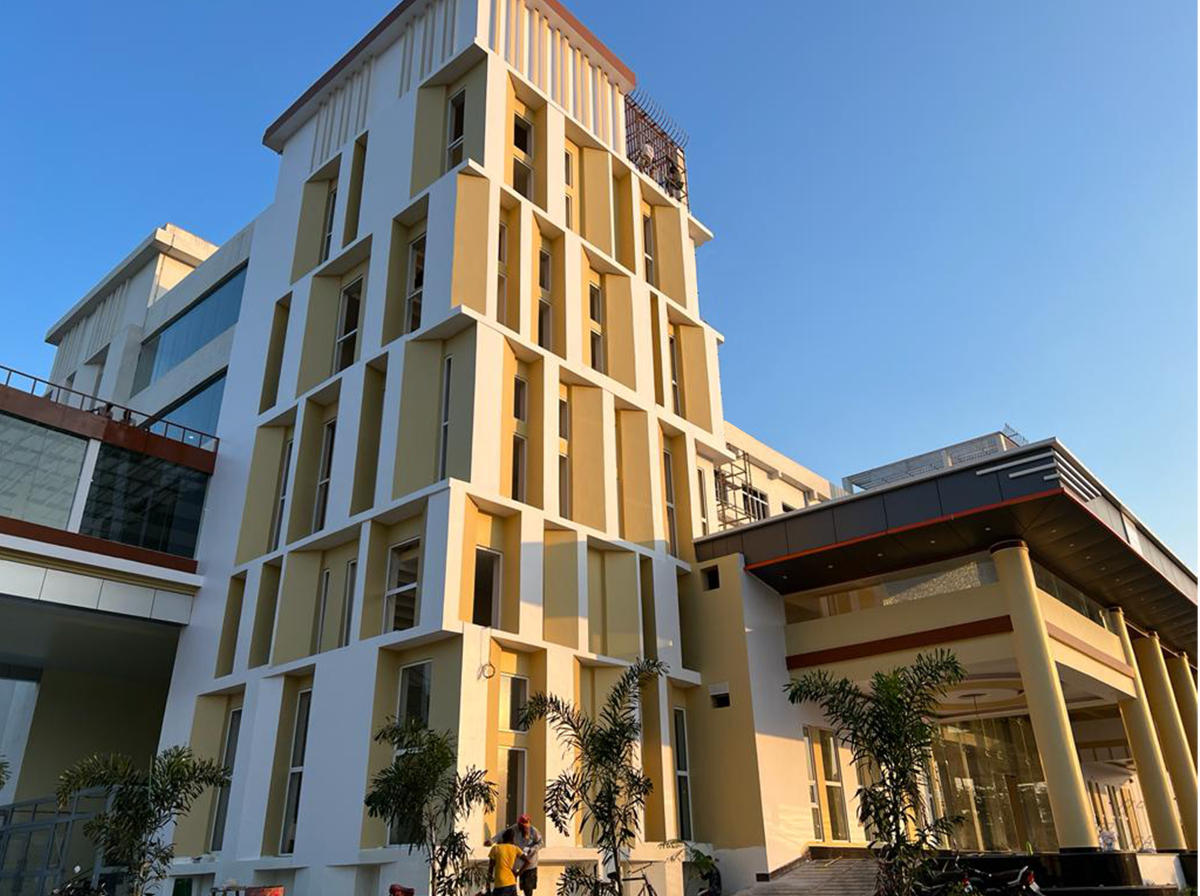
Moreover, structural compatibility and load transfer is an issue when integrating steel with other materials due to differences in their structural properties, including stiffness, strength, and load-bearing capacities. To address this, thorough structural analysis and design were conducted to optimise the integration of steel elements with other materials. This includes calculating loads, designing appropriate connections, and ensuring adequate support and bracing. Steel-concrete composite construction techniques can effectively combine the strengths of both materials for efficient load transfer and structural performance.
Acoustic and thermal performance was another challenge with steel, as it has different properties compared to concrete, wood, or gypsum board, leading to sound transmission issues and thermal bridging. To address this, acoustic and thermal insulation materials were incorporated. And assemblies were designed to minimise thermal bridging and optimise energy efficiency. Using composite systems or insulation layers also helped achieve the desired acoustic attenuation and thermal resistance.
Achieving aesthetic integration and design harmony when combining steel with materials like glass, stone, or wood posed another challenge in the process of building the school. It required careful detailing and coordination to ensure continuity and visual appeal. To address this, collaboration with architects, engineers, and contractors was essential in developing integrated design solutions. Close attention to finishes, joint details, and material alignments ensured seamless visual integration. Additionally, mock-ups and visualisations were used to evaluate and refine design concepts before construction.
Lastly, on-site coordination during construction was another challenge, as managing interfaces between steel elements and other materials was crucial for efficient assembly and installation. To address this, a coordinated construction sequence and schedule were developed. Regular meetings and communication among subcontractors helped resolve conflicts. In addition, Building Information Modeling (BIM) and digital tools were used for clash detection and coordination.
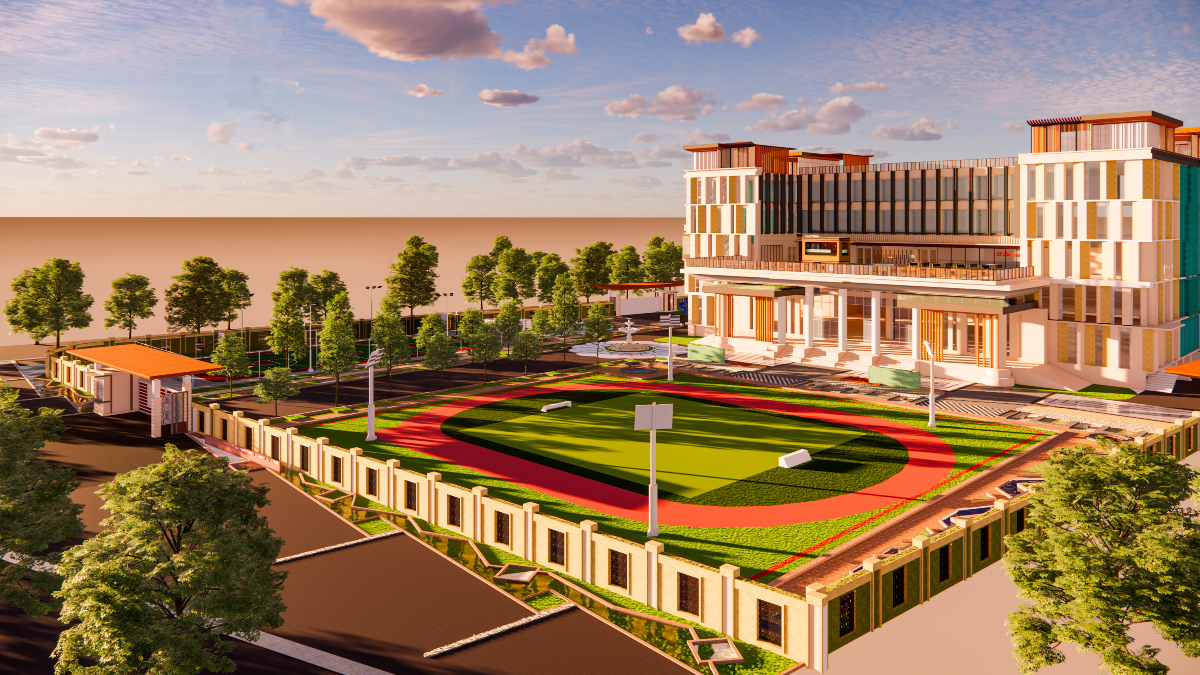
Optimising Vertical Space
Steel construction provided several benefits particularly in achieving optimal floor-to-floor heights and maximising the clear space beneath false ceilings.
Steel’s high strength-to-weight ratio allows for the use of slender structural elements that support significant loads while keeping the members relatively small. This capability enables the implementation of slim floor systems, such as composite floors, which minimise floor depths and maximise floor-to-ceiling heights. Steel also provides the flexibility to design large open spaces and achieve long spans without the need for intermediate supports. The ability to fabricate steel structures off-site facilitates faster on-site assembly, shortening the construction schedule.
Furthermore, integrating building services within the structural depth of steel framing systems maximises clear heights below false ceilings. Incorporating fire-resistant materials and coatings enhances safety, and the sleek appearance of steel contributes to the project’s overall aesthetic appeal. The result is visually striking interiors with high ceilings and uninterrupted views, showcasing the unique potential of steel in modern architecture.
Green Campus
In the design of the ‘Impressions – Jaipuria School,’ sustainability was emphasised from the outset. The approach included maximising natural daylight and selecting energy-efficient materials. Solar panels were integrated, and water conservation strategies were implemented to reduce environmental impact. The design incorporates sustainable materials, green spaces, and promotes sustainability education both within the curriculum and the community.
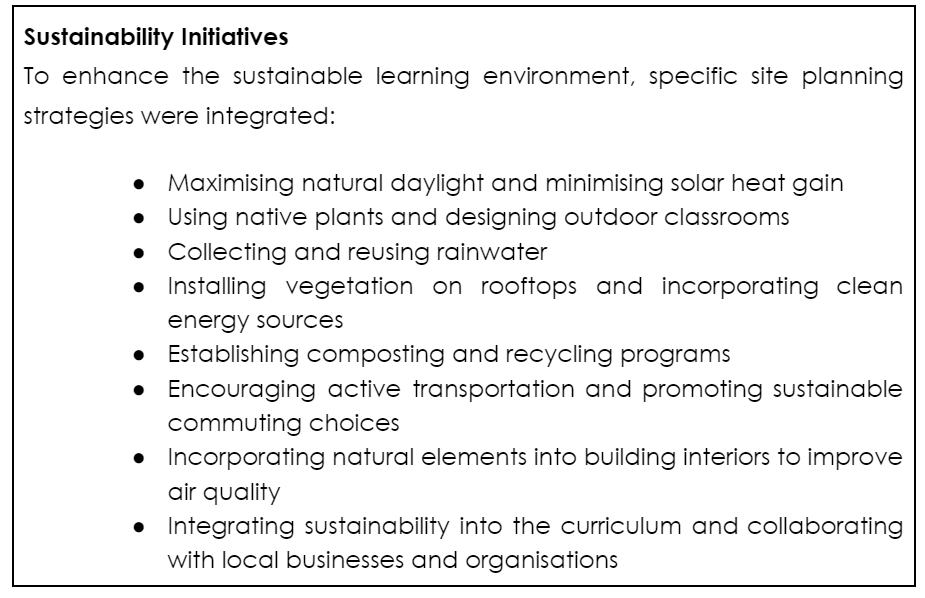
Build Smarter & Faster
The use of steel in Impressions – Jaipuria School has notably improved construction timeline and process efficiency compared to traditional methods like concrete or masonry. For instance, prefabrication and reduced construction phases led to faster assembly of steel structures, resulting in a quicker project completion. The predictability and availability of steel also shortened procurement lead times. On-site assembly was simplified due to bolted connections and lighter components, which reduces labour requirements. And, controlled fabrication processes ensured high quality and minimise waste, enhancing overall efficiency.
Moreover, steel’s flexibility in design and adaptability enabled the incorporation of innovative designs and facilitated easy modifications. The integration of steel framing systems with building services streamlined installation, and the use of steel reduced on-site hazards, contributing to a safer work environment. Overall, steel’s contribution to precision, quality control, and site management significantly optimised the construction process, making it a preferred material for this project.
Quote
“Elementary school design should prioritise safety, support diverse learning styles, foster a sense of community, and promote environmental stewardship. Thoughtful design considerations enhance the educational experience for students, teachers, and the broader school community. Architects approach school design with a holistic perspective, considering educational, environmental, social, and economic factors. By collaborating closely with educators and stakeholders, architects create learning environments that are not only functional and safe but also inspiring, sustainable, and conducive to student success and well-being.”
– GAURAV GUPTA, Principal Architect & Urban Planner, De:cA+Pe Studio
Fact File
Project: AN IMPRESSIONS – Jaipuria School, Lucknow
Client: Vijay Bahadur Yadav
Architect, MEP, Project Management: De:cA+Pe Studio
Consultant: Padma Casa
Fabricator: Aniltech
Tonnage: 12 MT
Status: Completed


